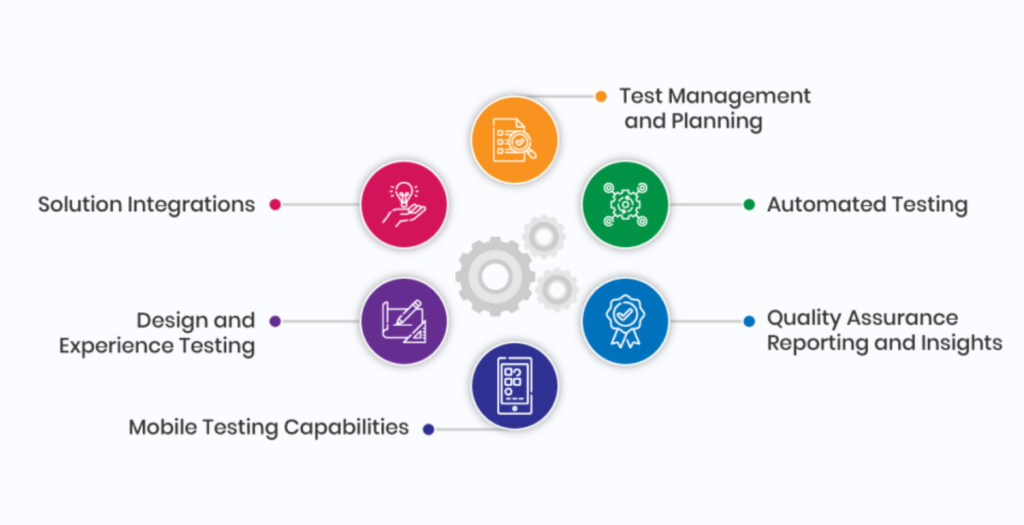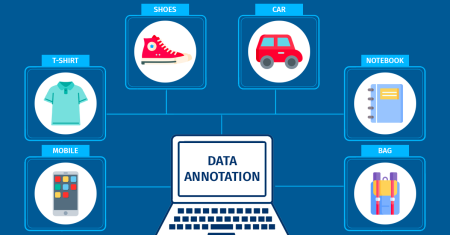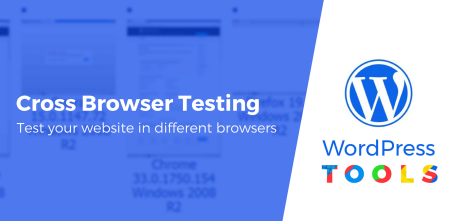Websites are accessed across different devices, browsers, and operating systems. This leads to the developers’ challenge to make sure that the interface is user-friendly and consistent. Web device testing ensures websites work on all devices. Web device testing ensures websites work well on all devices by identifying and fixing issues with screen sizes, input methods, and browsers.
In this blog, we’ll discuss the essential techniques for web device testing and look at popular tools that can help improve your automation testing process and ensure your web page delivers an optimal experience for all users.
Techniques for Web Device Testing
Here are some methods for effective web device testing:
Cross-Browser Testing
Cross-browser testing checks that your website functions correctly in various browsers and their versions. It helps identify and resolve layout issues, styling errors, broken features, and JavaScript glitches. Different web browsers use unique technologies to render websites, which can lead to varying results. Cross-browser testing confirms your site functions properly for all users, offering a consistent experience.
It’s best to test both the latest browser versions and some older ones. Automated tools like Selenium allow you to run tests on various browsers without switching manually. Some cloud platforms offer access to different browser setups without extra hardware, making cloud testing more efficient.
Cross-browser testing helps you catch and fix issues early to prevent problems that could affect user experience. It ensures a smooth experience for everyone. Testing across multiple browsers enables you to deliver a reliable website that appeals to a broad audience.
Cross-Platform Testing
Cross-platform testing makes sure your application works well on different operating systems. Variations in configurations, fonts, and rendering engines can lead to different user experiences on Windows, macOS, or Linux. These differences can cause misaligned layouts, unexpected behavior, or inconsistent styling.
Mobile platforms, such as iOS and Android, also have unique characteristics. Navigation patterns and hardware-specific features vary between these platforms and require careful attention during testing to maintain a consistent user experience. For example, An app feature might work on Android but act differently on iPhone.
Effective cross-platform testing involves running tests on multiple operating systems and devices. This helps you find and fix problems early before they affect users. Automated testing tools like Appium are helpful for mobile platforms. Tools like Selenium and similar tools cover web-based applications across different systems. Cloud-based services offer an easy way to test across various platforms without needing hardware resources.
Performance Testing
Performance testing shows how your application performs in real-world conditions. It checks stability, responsiveness, and resource usage under stress, such as heavy traffic or slow internet connections.
Load testing simulates many users to test how your application responds to heavy traffic. This helps you identify lags, such as slow database queries or inadequate server resources, that could cause the application to slow down or even crash. You can take steps to improve scalability and ensure your application can handle high loads by finding these issues early.
Stress testing involves pushing your application to its limits to determine its breaking point. This approach helps you understand how your application copes during peak traffic times or unexpected surges in usage.
Performance benchmarking involves setting baseline metrics for performance indicators such as response times, CPU usage, and memory consumption. You can then measure your application’s performance against these benchmarks to ensure it’s meeting expected standards.
Popular tools like JMeter and LoadRunner are designed to simulate various user loads and network conditions. These tools allow you to create test scenarios that provide valuable insights into your application’s performance.
Accessibility Testing
Accessibility testing ensures your website works for everyone with disabilities. This testing helps to create a digital platform that is accessible to all. Accessibility testing involves following the Web Content Accessibility Guidelines. This framework offers various principles to help developers create accessible digital content.
Accessibility testing means your application must be able to work with assistive technologies like screen readers which transform the text into speech, and screen magnifiers which enlarge the contents. It includes keyboard-only navigation that enables the users with the mouse unavailability to operate its website or app.
Tools like Axe Accessibility Toolkit and WAVE can automatically detect accessibility issues. These tools find problems such as missing alt text, incorrect heading structure, or inadequate color contrast. They also guide achieving accessibility standards and identifying areas that need improvement.
Security Testing
Security testing uncovers flaws or vulnerabilities in your web application and protects it from malicious attacks to ensure user data remains secure. Such weaknesses could mean security accidents or even data leaks by authorized individuals.
Cross-site scripting occurs when a hacker includes malicious scripts on the website, compromising user sessions or stealing sensitive information. SQL injection involves changing the code of web queries to get unauthorized access to the database or execute harmful commands. Cross-site request forgery fakes user commands to transact authorizations or changes of data. Security testing aims to identify and block these exploits before they are misused.
Security testing aims to find and fix these issues before they cause harm. Popular tools like OWASP ZAP, Burp Suite, and Nessus can automate security testing and simulate various attack scenarios. Regular security testing and audits are essential to ensure your web application stays secure and follows industry best practices and regulations. Including security testing in your workflow helps create safer applications and protect user trust.
Usability Testing
Usability testing checks how easy your website is for users to use. This involves directly collecting end-user feedback to identify sore spots and points where the overall thing can be improved.
It enables you to see how users work with your website or app. Using usability testing, it is possible to note anything that can add confusion, errors, or delays in completing tasks. This method is irreplaceable in understanding the behavior and preferences of users to provide recommendations that can reach them easily.
Usability testing implicates giving tasks to the users, such as finding info, making a purchase, or filling out a form. Knowing what’s being missed or underutilized, you can tweak the design to provide a better user experience.
Usability testing can also be face-to-face or virtual. Sometimes, it uses its proprietary software to capture users’ sessions. Introducing usability testing to your web device testing strategy will ensure that the website or application you are working on is user-friendly and matches user expectations. This type of web device testing is usually used together with other techniques, such as Performance and Accessibility testing, to make up an integrated test approach for Quality Assurance.
Tools for Web Device Testing
Here are some tools for effective web device testing:
LambdaTest
LambdaTest is an AI-powered test orchestration and execution platform that lets you run manual and automated tests at scale with over 3000+ real devices, browsers, and OS combinations. You can test your website or web application on over 3000 real devices and different operating system combinations, offering a dependable and expandable environment. Below are a few critical characteristics provided by LambdaTest:
- Provides real-time testing capabilities for both mobile and desktop devices.
- Allows you to run both automated and manual tests on various browsers.
- It lets you capture bugs and issues directly during the testing process.
- Helps testers identify layout issues, functionality glitches, and performance variations due to different rendering on various platforms.
- Offers interactive testing for real-time user interaction and screenshot testing to detect visual disparities across different environments.
- Adapts effortlessly to changing testing demands.
- Facilitates geolocation testing with GPS and IP for scenarios requiring location-based testing.
- Integrates with collaboration tools for CI/CD, project management, codeless automation, and more.
Selenium
Selenium is a popular framework for automating web browser testing. It’s highly flexible and supports various programming languages. This flexibility allows developers to write test scripts in their preferred language. Selenium is used for cross-browser testing to automate tests across different browsers. This feature ensures consistent functionality and compatibility across platforms.
Selenium can also be integrated with CI/CD pipelines to enable continuous testing throughout the development lifecycle. This integration helps developers catch issues early and maintain a smooth workflow for more reliable and efficient web applications.
Appium
Appium is an automated testing tool for mobile applications. It supports iOS and Android devices to provide a unified platform for testing mobile apps. Appium allows you to write test scripts in various programming languages, offering developers flexibility.
Appium integration with other testing frameworks and CI/CD pipelines enables smooth automation and continuous testing. You can simulate user interactions like swipes, taps, and gestures to ensure comprehensive testing of mobile app functionalities.
Jest with Puppeteer
Jest is an easy-to-use JavaScript testing framework. It permits you to organize the tests and deploy them automatically. Jest is excellent for unit testing, which examines the small pieces of code and integration testing that ensure parts of your code work together. Puppeteer is a tool that allows managing a web browser without running the browser itself. It automates tasks such as pressing buttons, filling out forms, and going through the pages.
One of the features that they enable jointly is test automation for web applications. Such an environment is ideal because it allows you to practice how users interact with your website. Run cross-browser testing to check how your site looks and works in different browsers.
Lighthouse
Lighthouse is designed to evaluate the quality of web pages. It provides a comprehensive audit covering performance, accessibility, best practices, search engine optimization, and Progressive Web Apps. Lighthouse is integrated with Chrome DevTools to make it convenient to run audits during development and gain insights into areas that need improvement.
Lighthouse’s performance audit measures page load times and resource usage. Its accessibility audit checks compliance with essential accessibility standards. The tool also assesses best practices like security, coding standards, and SEO factors. Using Lighthouse during development helps you identify and fix issues early.
Axe Accessibility Toolkit
Axe is a tool for checking if websites are accessible to everyone, including people with disabilities. It helps find common issues like missing image descriptions, incorrect heading order, or hard-to-read text due to low contrast. You can use Axe with automated testing tools like Selenium and Cypress to catch these problems in your code.
Axe gives you detailed reports that explain what needs fixing and how to fix it. This helps you follow accessibility rules like the Web Content Accessibility Guidelines. You can make sure your website is usable for all people using Axe.
Conclusion
In conclusion, Web device testing is critical to ensuring a successful user experience. Using the above-mentioned techniques, you can achieve adequate coverage for your application.
Using the mentioned tools can enhance your testing efforts. These tools offer various capabilities to address testing requirements, from automation and manual testing to performance and accessibility assessments. Incorporate these techniques and tools into your web device testing strategy to ensure your website or application performs optimally across different environments.














